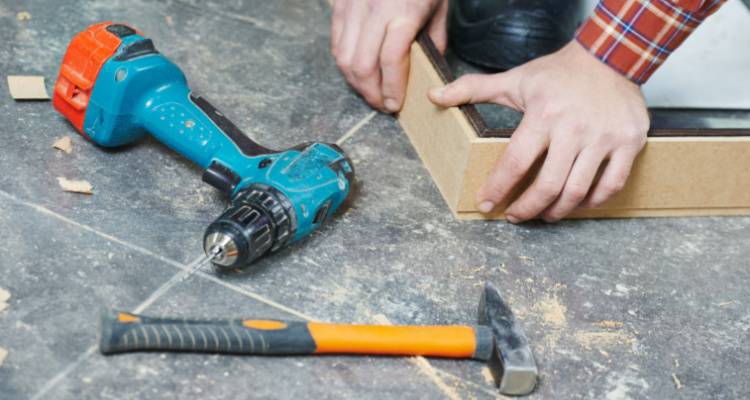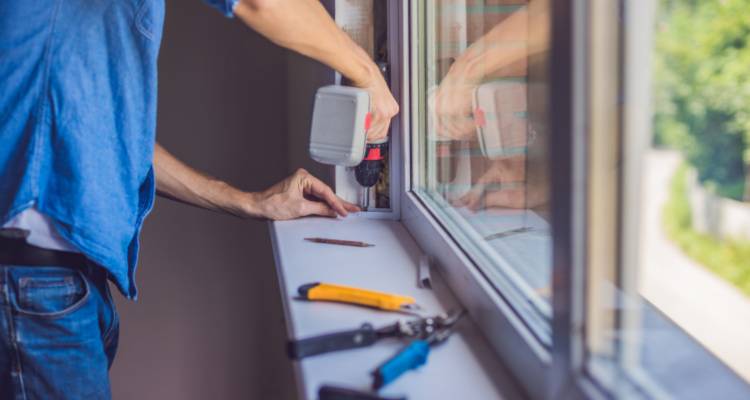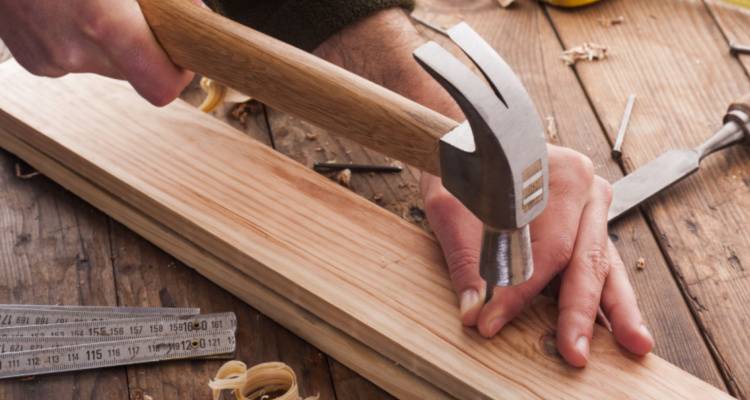5 Tips from a Builder
With the rising cost of living, many people are now choosing to complete DIY repairs and odd jobs around the home rather than hiring a professional to complete the work for them.

This can lead to several issues if the work isn’t completed correctly. Taking a job you’re unfamiliar with can result in health and safety hazards, structural issues and even more money being spent further down the line.
If you are considering doing some DIY jobs around the home, there are certain things that you should keep in mind. We’ve compiled our five best tips for avid DIYers straight from a construction specialist to avoid project issues, both structural and financial, frustrations, and potential dangers.
Always Read The Instructions Carefully
Have you ever started a DIY project and found that it didn't go the way you planned?
This can often be down to needing to read the instructions carefully.
Whether a flat-pack furniture assembly or a building project, reading the instructions and ensuring you understand them can save you time, money and headaches in the long run.
It's important to make sure you have all the tools and materials you need before you start and to follow the instructions step by step, paying attention to all the details. Take your time to ensure that the result is exactly what you wanted and no accidents are had along the way.
Invest in Quality Tools
Having the right tools for the job is essential to completing the project correctly and on time. Quality tools greatly impact a project's overall success, not just in terms of the quality of the final product but also in terms of safety, efficiency, and overall job satisfaction.

You must take the time to thoroughly research the project prior so you can invest in good tools for the job. This will allow you to complete your project easily and without the added hazard to your health and safety.
Investing in high-quality tools can save you time and reduce frustration, preventing unwanted and repeated trips to the hardware store for replacements and repairs.
Think About Safety First
Safety should always be your top priority when working on any DIY project. This means ensuring that you have the right equipment, such as protective glasses, gloves and a hard hat, and taking the necessary precautions to ensure that you don't put yourself or others at risk.
Always be aware of your surroundings, especially when working at heights or with electrical equipment. Make sure to take breaks, stay hydrated, and never attempt to do something you feel uncomfortable or unsure about.
Take Your Time
When starting a DIY project, getting caught up in the excitement of getting everything done as quickly as possible is easy. However, rushing through a project can lead to mistakes and compromise the structure's safety.
Setting realistic goals for each day and trying not to tackle too much all at once is important. If you're planning on painting a room, research the job before ensuring you understand the timings and potential obstructions for the prep, the project, and the cleanup.
This will help you to plan around your current routine, manage expectations, and give you more control over the process.

Taking the time to do the job right the first time can save you a ton of time and money in the long run. Rushing through a big project, such as installing new electrical wiring, could not only result in safety issues, but you may find yourself having to redo the job or call out a specialist to correct your work.
Spending that little bit extra on the process offers confidence that it will be safe and reliable and won’t cost you further down the line.
Setting realistic goals, taking your time, and using high-quality materials is key to ensuring the success of your DIY project and preventing your DIY project's success and preventing costly mistakes in the future.
Use High-Quality Materials
When it comes to building, the materials you use can make all the difference in the quality and durability of your project. Using low-quality materials can result in weak foundations and structural issues and pose a safety hazard.
It's important to choose high-quality materials suitable for the job and to ensure that they are installed correctly.
A common DIY mistake is choosing the cheaper option when building decking or foundation. This type of lumber is likely to warp, split, and rot over time. Using high-quality, treated lumber will ensure a sturdy and long-lasting structure that will withstand the elements and require less maintenance.

When choosing materials for projects such as roofing, it's tempting to choose the budget-friendly alternative. But using a low-quality roofing material can result in leakage, leading to water damage, mould, and other costly problems.
High-quality roofing materials, such as metal roofing or asphalt shingles, are designed to last many years, are weather-resistant and can withstand harsh weather conditions.
It's important to consider the long-term costs of repairs and maintenance and the potential dangers these materials can pose. Investing in high-quality materials ensures that your building projects are safe, sturdy, and long-lasting.
Would you like to find a reliable builder? Take a look at the range of builders we have at MyJobQuote.
If you like some more tips from the professionals, check out these guides too:
Last updated by MyJobQuote on 22nd April 2024.







